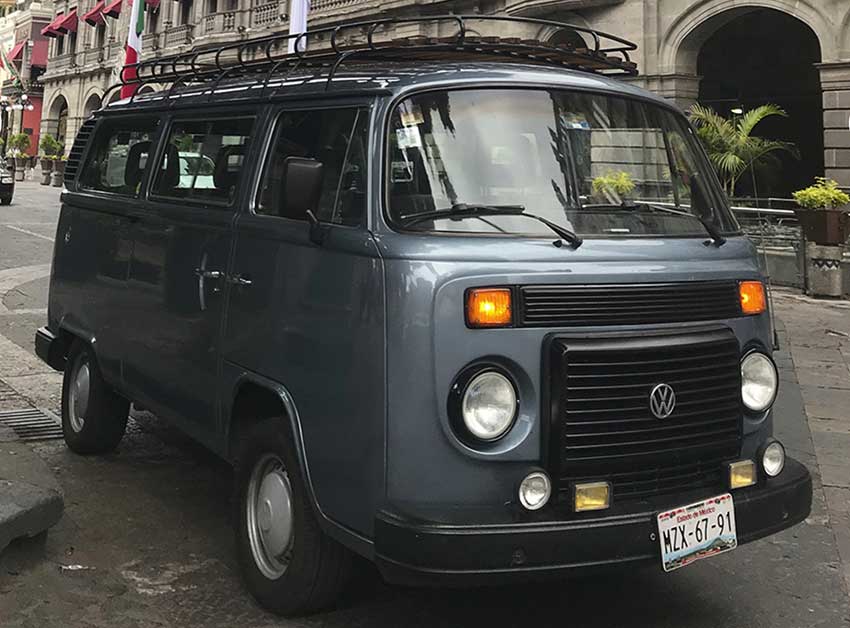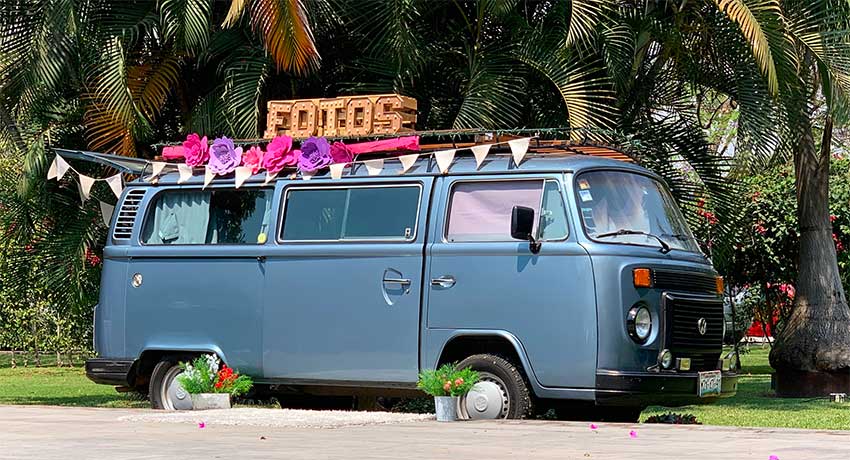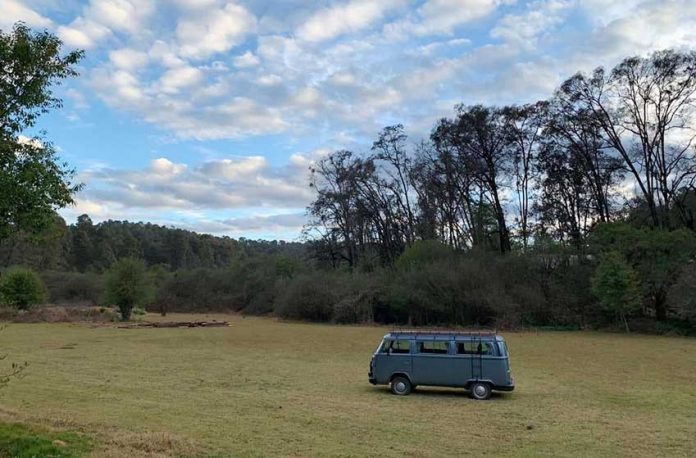It’s strange the things that make us nostalgic. Ordinary things from the past suddenly feel magical looking back. For me it’s listening to records in my parents’ living room and having summer cook-outs; for Jorge Reich, it’s VW buses.
Jorge’s father bought a 1974 white and orange Volkswagen Hightop before he was born. He named it Matilda. The family had taken trips aboard a VW bus before, but this was the first time that they had their own.
It would begin a long obsession for Jorge’s father that trickled down into the psyche of his son and wouldn’t let him rest until he had his own Matilda almost 40 years later.
Trips on the bus, in Mexico called a combi, were some of the happiest times for the Reich family. Jorge is particularly fond of reminiscing about their marathon trip to Quebec, Canada.
“It was the summer of 1984. I was eight years old and we traveled from Mexico to Quebec in 10 days. We visited Ottawa, Toronto, Montreal and Niagara Falls and then on the way back we went slower and saw New York, Philadelphia, Washington DC, and a bunch of the other cities in the U.S.”

“That trip changed my life. I remember loving the road so much. My dad would talk to me while he drove about what you needed to know to drive a combi – the air, how to pass, how to break with the motor. All the tricks.”
Today we are gliding down the highway in his own 1990 VW bus, a “luxury edition” when it came out because of the air conditioning.
“But 30-year-old air conditioning now? If I put it on we’ll never make it.”
Not that we need it. We are headed out of Mexico City on a bright, beautiful 24 C day, the everyday perfect weather of this part of Mexico. This is the fourth bus that Jorge has bought since he purchased his first in 2017.
She was a 1970 German Westy and he named her Matilda 70. Two others he sold at U.S. auto shows and the original Matilda is stored at his mom’s house for their yearly family camping trip. This bus, called La Chata, is what Jorge uses for weddings when he converts the bus into a mobile photo booth.
Despite all his projects, what he really wants is to get back on the road and so he’s decided to start taking tourists on vintage-style road trips in and around Mexico City — you bring your itinerary (or he can suggest one) and he’ll take care of the rest. We are taking the inaugural trip to the monarch butterfly sanctuary a few hours from here in Valle de Bravo.
I attest to the relaxation of having someone else drive and figure out the directions while I am free to just sit back and enjoy the scenery, and the bus is extremely comfortable for being 30 years old!
Part of the joy of sitting up front in a VW bus is that you have this incredible wide-angle view of the countryside. We pass miles of sunflowers with their heads turned to the sun, acres of flower greenhouses growing cut flowers for the Mexico City market, and loop through pine forests with hushed, needle-covered floors, dappled in sunlight.
The Piedra Herrada Monarch Butterfly Sanctuary is located about 20 minutes from Valle de Bravo, a small Pueblo Mágico often used as weekend getaway by residents of the capital. In January, February and March the monarchs arrive after their own three-month “roadtrip” from Canada and the northern United States.
Their journey has gotten harder as time goes on. Destruction of habitat along the way and in Mexico due to illegal logging and farming, the use of pesticide-resistant GMO crops (meaning farmers can more easily spray for weeds like milkweed, the main food source of monarch caterpillars), and rising global temperatures that force butterflies farther north in the summer, make their already life-risking journey even harder.
The 700 members of the San Mateo Almomoloa community that run Pierda Herrada have the responsibility of ensuring that at least in the sanctuary, no one is doing anything that would threaten these precious visitors.
Our local guide tells us as we hike the two kilometers to the top of the sanctuary that the butterflies travel around 200 kilometers a day as they fly from Canada to Mexico starting in September. The generation that we are about to see lives the longest (about eight to nine months) in order to make the entire trip from Canada to Mexico and back to Texas to lay their eggs.

One-third of the group will die along the way from the rain and smog and colliding with vehicles. Once they arrive they spend three months recovering, drinking water, feeding on flowers and resting. In February they begin to mate.
At the top of the trail the scene is undescribable. Butterflies are everywhere, convulsing on the ground in the throes of mating, alighting on the mountain wildflower for a sip of nectar and once in a while, when something spooks them, flying up en masse, covering the sun in a blanket of orange.
Monarchs have been taking this trip for centuries and follow an ancient path to their wintering sites each year. Because generations die throughout travel, their directional precision is not something that is taught to children by parents, it’s something instinctual in their very fiber.
Scientists still don’t know exactly how they do it but believe that it has something to do with the magnetic pull of the earth. Ciro, our guide, says that some believe they leave a residue from their feelers that helps the next generation find their way.
No one knows, but each year they majestically arrived to huddle up in two hectares of forest outside Valle de Bravo.
While the butterflies themselves are not considered endangered, their migration most definitely is. They are one of the world’s great pollinators, especially because certain flowers require the long proboscis of the butterfly in order to be pollinated.
A complex web of ecological interdependence means that the loss of the butterflies could have frightening consequences for many species. These butterflies will also become a thing of nostalgic memory if we don’t protect them.
As we get back on the road with our dust-covered feet and legs, Jorge slows the bus down even further to get a look at the last lingering orange and black wings floating across our path. I wish we could travel alongside them on their cross-continental trip.
We silently wish them well on their journey and continue on with ours.
Lydia Carey is a freelance writer based in Mexico City.
